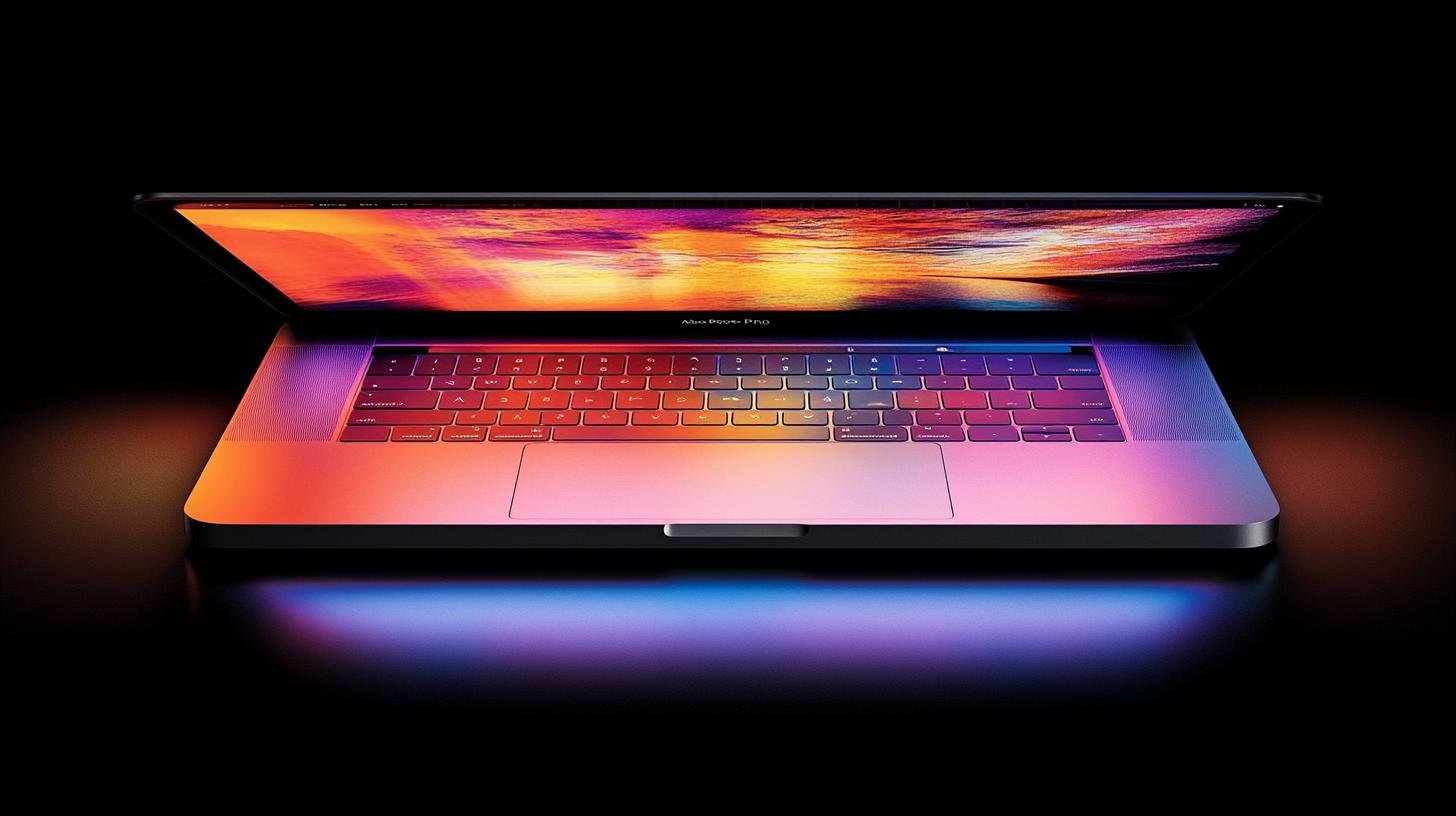Apple has quietly revolutionized its MacBook Pro displays by integrating Quantum Dot technology, a forward leap in display innovation that promises enhanced visual experiences. Renowned display analyst Ross Young from Display Supply Chain Consultants has brought this development to light. Such insights from Young carry weight, given his expertise in the field of display technology.
Quantum Dot technology, a buzzword often associated with modern televisions, involves the application of an advanced layer over the LEDs responsible for screen backlighting. This adjustment significantly broadens the range of colors the screen can display. Unlike the conventional red phosphor KSF film, Quantum Dot yields not only richer colors but also sharper graphics by improving response times. This means that moving images on the screen appear smoother and clearer, reducing issues like ghosting.
The use of Quantum Dot isn’t entirely new, but Apple was deliberate in its timing. According to Young, prior versions of Quantum Dot layers lacked efficiency and were less desirable compared to their KSF counterparts, leading to higher energy consumption. Moreover, early Quantum Dot layers were made using cadmium, a toxic metal that Apple vowed to eliminate from its products back in 2015, due to its harmful effects on health, including its carcinogenic potential.
As Apple steps into the Quantum Dot era with their MacBook Pro, users can expect a more vibrant and seamless visual experience—one that aligns with Apple’s commitment to both innovation and safety.
Quantum Dot Displays: A Double-Edged Sword for Future Tech?
The integration of Quantum Dot technology in Apple’s MacBook Pro lineup has ignited buzz across tech communities, sparking debates about the implications of this advancement not only for computers but also for other technologies and industries. But what does this mean for the future of technology and humanity as a whole? Let’s delve into the nuances of this innovation, assess its impact, and uncover some surprising facts and controversies around it.
Revolutionizing Visual Experiences
Quantum Dot technology is not just about making the colors on your screen look prettier—it’s a significant advancement that could transform how we interact with all digital displays. By enhancing color accuracy and sharpness, it can revolutionize fields like graphic design, digital art, and even industries such as healthcare, where precise image representation is crucial.
Advantages of Quantum Dot Displays
1. Enhanced Color Gamut and Brightness: Quantum Dots dramatically increase the color range and brightness levels that displays can achieve. This is crucial for professionals requiring exact color matching, such as photographers or video editors.
2. Energy Efficiency: While early versions of Quantum Dots had efficiency issues, the newer iterations used by Apple promise reduced energy consumption, aligning with global sustainability goals.
3. Potential in Various Applications: Beyond computers, Quantum Dot technology holds potential in flexible displays, wearable tech, and future television models, potentially redefining media consumption.
Disadvantages and Controversies
1. Material Concerns: Although Apple has moved away from cadmium-based Quantum Dots due to health concerns, there’s ongoing debate about the ecological impact of Quantum Dot production. Are there other harmful materials involved?
2. High Production Costs: The complexity of producing Quantum Dot displays can drive up costs, making them less accessible to the average consumer initially.
3. Technological Compatibility: Integrating Quantum Dots with existing hardware can be challenging, potentially delaying widespread adoption.
Critical Questions Addressed
– Do Quantum Dot displays herald the end of traditional LED technology? Not entirely. While they offer superior attributes, Quantum Dots could complement, rather than replace, current technologies, giving consumers more tailored options.
– Could Quantum Dot technology drive AI and VR advancements? Absolutely. Improved color accuracy and response times could enhance AI-driven image analysis and more immersive VR experiences.
A Step Towards Futurism?
The introduction of Quantum Dots by Apple might just be the tip of the iceberg. Envision a future where display cultures are reshaped, leading to even smarter classrooms, more interactive conferences, and home entertainment systems that rival public cinemas. However, balancing innovation with environmental and health considerations remains crucial.
For those eager to explore more about display technologies and their impacts, visit Apple and Display Supply Chain Consultants for further insights.
Quantum Dot technology certainly holds promise, but as we stand on the precipice of this technological leap, it’s imperative to weigh its advantages against potential drawbacks. The journey ahead promises to be colorful—both literally and metaphorically.







